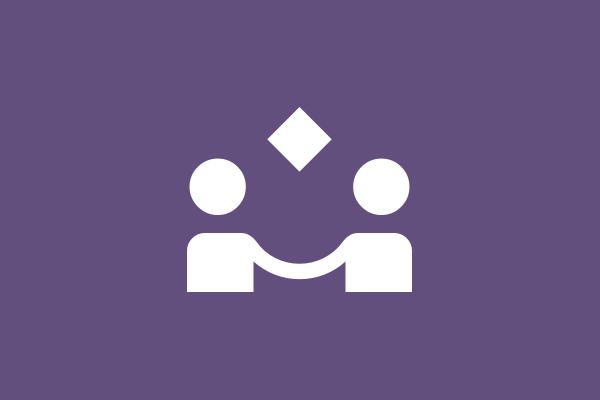Go async-first with your team
Use the filters below to find async-first methods that are relevant to your team. For detailed articles, check out the blog.
- Audit trails
- Budgeting and funding
- Collaboration fundamentals
- Communication tools
- Company culture
- Design
- Efficient onboarding
- Estimation
- General management
- Inceptions
- Lead by example
- Leadership communication
- Meetings as the last resort
- Pairing and feature dev
- People management
- Personal productivity
- Planning
- Promote feedback
- Relationships
- Rethink scrum
- Simplify the story lifecycle
- Sprint management
- Team bonding
Decentralise team F2F events
Autonomous teams make their own decisions. So leave the decision of when to meet F2F, to the team itself.
Personal user manual
If you were a product, it’d help people to know how to use you effectively. A personal user manual helps people do just that!
Baton pass inception facilitation
Make time-zones your ally. By alternating facilitation responsibilities across locations, you can make cross timezone workshops and inceptions less stressful for everyone.
Validate. Don’t start from a blank slate.
During inceptions and workshops, it's easier to poke holes at something wrong than to write the first words on a whiteboard. So instead of starting from a blank slate, synthesise what you think you know and then validate your understanding.
Inceptions as a process, not an event
Every activity in the inception journey has the potential to be at least partly asynchronous. To be pragmatic about how much synchrony you need, you must recognise inceptions as a process and not an event.
Make your inceptions lean
The lean inception is a focused way to gather information to start a project. You can complete this in a single week.
Technical design docs
Technical design docs are an efficient way to communicate about software architecture and technical solutions. These docs precede an architectural decision record. They benefit from detail, though brevity is an important consideration too.
Feature breakdown documents
Feature breakdown documents serve as a single resource to catalogue all information about a feature. As the team enhances the feature, this document becomes a single source of truth about it.
Idea papers
Idea papers allow you to nurture fresh ideas by articulating them clearly. People can use this as a reference to share feedback and enrich the idea. Decision making is also easier if everyone can understand the idea well.
F2F social events
F2F interactions are a great way for your team to recharge your social batteries and to build camaraderie.
Async audio
Async audio can be an interesting way to share your message while conveying emotion. Audio is particularly easy to consume passively; such as, when working out or when driving.
Onboarding FAQs
An onboarding FAQ helps your preserve the “dumb questions budget” for any new hire to your team.
Onboarding checklists
A precise checklist takes away the guesswork from the onboarding process. Document what the new hire needs to do, by when they need to do it, and how.
Onboarding buddy
A buddy is a new hire’s tour guide in the team. They can be a sounding board for questions, the person who makes introductions to others and also the first port of call for help.
1:1 meetings with new team members
1:1 meetings with new hires are a very effective way for them to get to know their colleagues.
New team-mate lunch
Sharing a meal with your new team-mate can make them feel welcome to the team. Use this as a regular onboarding pattern.
Recorded presentations
Recorded presentations help you convey information asynchronously. This frees up time to meet for high stakes, engaging conversations and workshops.
6 page memo
The 6-page memo pattern forces you to prep for a meeting and to consume the background information before you dive into discussion.
Silent meetings
Silent meetings can better leverage the ideas, perspectives, and insights of your team. They’ll not just help improve your meetings, you’ll also see better ideas and solutions emerge.
Write, don’t meet
You can avoid many meetings by just writing things up. This can help you generate reusable artefacts in many cases.
Sponsor a collaboration tools audit
To figure out what tools and capabilities you need for knowledge sharing, consider a collaboration tools audit. This’ll help you identify tooling gaps and to create an investment roadmap for your executives to approve.
Find the "goldilocks" zone
Not too easy. Not too difficult. Just right. How do you find that zone for your direct reports?
Don't oversubscribe yourself
Most people can’t reliably manage more than 4-5 people. Work with your HR team to streamline reporting relationships so you only have as many people to manage as you can truly care for.
Fund cross team retreats
Meeting people from different teams can be really fun. Such events are tough to organise, but incredibly valuable.
Identify community managers and curators
People won’t automatically adopt your knowledge and community platform. You need community managers and curators to make the platform attractive and useful to people.
Escape recurring meeting hell
Recurring meetings are the bane of leaders’ and managers’ existences. Just. Get. Rid. Of. Them.
Document your role
Don’t let your team be vulnerable to a low “bus factor”. Make your role explicit.
Eliminate bullshit jobs
No one needs to do meaningless, soul-sapping work. Not even you. Take the time to get rid of such work so you and your colleagues can focus on the work that brings you joy.
Be an authentic communicator
Be yourself when you communicate as a leader. People will find you more relatable that way.
1:1s with direct reports
The most effective tool to support and lead your direct report, is the 1:1 or one-on-one meeting. Here are some tips to do them well.






























